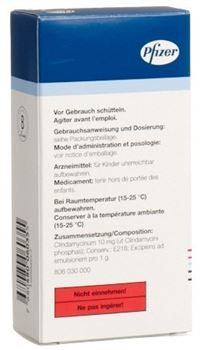GE Healthcare announces remarkable growth in the first quarter, despite a complex pricing environment.
Revenue increased by 2.7% to $4.78 billion, while net income surged by 51%.
New initiatives and technological innovations support this solid performance.
Despite the downward revision of adjusted earnings forecasts for 2025, the company demonstrates impressive resilience. GE Healthcare’s efforts to mitigate the impact of tariffs through USMCA compliance and logistical optimization are paying off. Innovation remains at the core of their strategy, as evidenced by the Revolution Ascend CT system integrating an AI feature that reduces the necessary clicks by 66%. The U.S. market, the growth driver, sees double-digit order increases, particularly in the fields of cardiology and oncology.

GE Healthcare adjusts its profit forecasts for 2025
GE Healthcare, a global leader in medical technology, recently announced a reduction in its profit forecasts for the year 2025. This decision comes due to the significant impact of customs tariffs on its financial operations. Company executives noted during the last earnings call that the total impact of tariffs, estimated at 85 cents per share, would have more than doubled without the ongoing mitigation actions.
The CEO Peter Arduini highlighted that bilateral tariffs between the United States and China account for 75% of the total net impact. As a result, GE Healthcare now expects adjusted earnings to be between $3.90 and $4.10 per share, down from a previous estimate of $4.61 to $4.75. This revision reflects a persistent expectation of high tariffs and ongoing tariffs on trade with China, as well as reciprocal U.S. tariffs applied to the rest of the world.
Despite this negative revision of forecasts, GE Healthcare maintains a proactive approach by implementing various strategies to mitigate the impact of tariffs. These measures include compliance with USMCA (United States-Mexico-Canada Agreement) standards and optimization of logistics routes. Without these actions, the gross impact of tariffs would have reached approximately $1.75 per share, according to Arduini.
Impact of customs tariffs on financial performance
The increase in customs tariffs has had a noticeable effect on GE Healthcare’s financial performance. In 2025, the company expects an impact of 85 cents per share, primarily due to the tariffs imposed on trade with China. This situation further complicates an already challenging economic environment marked by international trade tensions and currency fluctuations.
The CFO Jay Saccaro indicated that the company is exploring additional tactics to reduce this impact, such as dual sourcing and manufacturing products where they are consumed. This approach aims to decrease dependence on international supply chains vulnerable to high tariffs while strengthening the company’s resilience in the face of economic uncertainties.
Despite the challenges posed by tariffs, GE Healthcare recorded revenue growth in the first quarter, reaching $4.78 billion, which is a 2.7% increase compared to the previous year. Net income also climbed to $564 million, representing an increase of nearly 51% year-over-year. These results demonstrate some resilience from the company in the face of tariff pressures.
GE Healthcare executives also noted that without the mitigation actions implemented, the impact of tariffs would have been even more severe, effectively doubling the reduction in expected profits. This highlights the importance of the proactive strategies adopted by the company to navigate a complex business context.
GE Healthcare’s strategies to mitigate tariff impact
To address the challenges posed by customs tariffs, GE Healthcare has implemented several strategies aimed at reducing its exposure and maintaining its financial performance. One of the main initiatives is to comply with the requirements of the USMCA, allowing it to benefit from tariff exemptions on eligible imports from Mexico and Canada.
Supply chain optimization
At the same time, the company has optimized its logistical routes to minimize costs and delivery times. This optimization includes diversifying suppliers and establishing new production lines in less tariff-impacted regions. These adjustments not only reduce costs related to tariffs but also enhance overall operational efficiency.
Dual sourcing and local production
Dual sourcing is another key tactic adopted by GE Healthcare. By diversifying its sources of supply, the company reduces its dependence on specific markets subject to high tariffs. Moreover, by increasing local production, GE Healthcare can better respond to demand while minimizing the impact of tariffs on its products sold internationally.
These mitigation measures are essential for maintaining GE Healthcare’s competitiveness in an ever-evolving global market. By adopting a proactive approach and diversifying its operations, the company positions itself to overcome the challenges posed by tariff fluctuations and economic uncertainties.
Sales growth and first quarter performance
Despite the pressures from customs tariffs, GE Healthcare recorded a solid performance in the first quarter of the year. Sales reached $4.78 billion, marking a 2.7% increase compared to the same period last year. This growth is largely attributed to the robustness of the U.S. market, which spurred double-digit growth in orders.
Net income also experienced significant growth, reaching $564 million, a nearly 51% increase year-over-year. These results demonstrate GE Healthcare’s ability not only to withstand tariff pressures but also to capitalize on growth opportunities in key segments such as cardiology and oncology.
According to Arduini, GE Healthcare’s customers prioritize investments in imaging products, allowing the company to gain market share in several sectors. This strategic focus on cutting-edge technologies addresses a growing demand for advanced medical solutions, further strengthening GE Healthcare’s position in the global market.
Additionally, the better-than-expected performance in the Chinese sector, despite an unfavorable tariff environment, illustrates the resilience and agility of the company. Analysts, such as Rick Wise from Stifel, praised GE Healthcare’s results, noting a “truly positive” performance on multiple fronts.
GE Healthcare’s technological innovations in response to current challenges
In an economic context marked by uncertainties and tariff challenges, GE Healthcare continues to stand out through its technological innovations. A notable example is the Revolution Ascend CT system, equipped with an artificial intelligence feature that reduces the number of clicks necessary to perform a CT scan by 66%. This technological advance not only enhances the efficiency of medical processes but also bolsters the competitiveness of GE Healthcare’s products in the market.
Innovations in artificial intelligence play a crucial role in improving medical diagnostics and treatments. By integrating advanced features into its equipment, GE Healthcare meets the growing needs of healthcare professionals for more effective and intuitive tools. This translates into a better user experience and a reduction in medical errors, thereby contributing to improved quality of care for patients.
Moreover, continuous investments in research and development allow GE Healthcare to stay ahead of its competitors. The company constantly explores new technologies and develops innovative solutions to respond to the evolving medical sector. This focus on innovation is essential to ensure the long-term growth of the company and to adapt to the changing demands of the market.
Furthermore, GE Healthcare is committed to collaborating closely with other industry players to promote knowledge sharing and the development of complementary technologies. This collaborative approach stimulates innovation and creates beneficial synergies for all stakeholders, including patients, healthcare professionals, and business partners.
Market outlook and hospital demands
The market outlook for GE Healthcare remains optimistic despite the current challenges related to customs tariffs. The company benefits from strong demand in the hospital sector, where investments in hospital capital continue to grow. CFO Jay Saccaro noted that overall demand from hospitals remains constructive, with a record backlog that has substantially increased compared to the previous year.
This robust demand is fueled by the ongoing need to modernize medical infrastructures and adopt advanced technologies to enhance patient care. Hospitals are investing in cutting-edge imaging equipment and digital solutions that improve operational efficiency and diagnostic quality. GE Healthcare, through its technological innovations, is well positioned to meet these growing needs.
Additionally, Saccaro indicated that client budgets, often defined at the beginning of the year, have not experienced significant reductions or delays despite an uncertain global business environment. This budgetary stability reflects the confidence of healthcare institutions in the solutions offered by GE Healthcare and their ability to invest in technologies that provide real added value.
The U.S. market, in particular, continues to be a key driver of growth for GE Healthcare. The double growth in orders and increased investments in cardiology and oncology sectors reflect a trend towards more specialized and outcome-focused healthcare. This strategic orientation not only fosters sales growth but also strengthens relationships with customers and partners in the medical sector.
In conclusion, despite the challenges posed by customs tariffs, GE Healthcare shows remarkable resilience through its mitigation strategies, technological innovations, and ability to capture the growing demand of the hospital market. The company continues to position itself as a key player in the medical technology industry, with promising prospects for the years to come.
The recent announcements from GE Healthcare regarding the reduction of its profit forecasts for 2025 underscore the challenges posed by current customs tariffs. Indeed, bilateral tariffs between the United States and China now represent 75% of the total net impact, thereby constraining the company’s financial outlook. This revision highlights the crucial importance of international trade policies on the performance of large companies in the medical sector.
CEO Peter Arduini emphasized the mitigation actions undertaken by GE Healthcare, notably compliance with the USMCA and optimization of logistics routes. These initiatives have helped to reduce the gross impact of tariffs, which would have reached approximately $1.75 per share without these measures, to $0.85 per share thanks to the efforts made. This proactive management demonstrates the company’s ability to adapt in the face of a complex business environment.
Despite these adjustments, GE Healthcare recorded solid growth in the first quarter, with sales reaching $4.78 billion, a 2.7% increase compared to the previous year. Net income also rose by nearly 51%, reaching $564 million. These positive results are primarily attributable to strong demand from the U.S. market, where investments in imaging products, particularly in cardiology and oncology, have been prioritized.
The Chief Financial Officer, Jay Saccaro, highlighted that the company is exploring additional strategies to mitigate the impact of tariffs, such as dual sourcing and local manufacturing. Furthermore, demand for hospital capital remains constructive, with a record backlog that indicates the confidence of clients despite the uncertain global economic environment.
In conclusion, although GE Healthcare has revised down its profit forecasts for 2025 due to customs tariffs, the company demonstrates remarkable resilience through its effective adaptation strategies and robust performance in its key markets. These efforts allow GE Healthcare to maintain its position as a leader in medical innovation while skillfully navigating the challenges posed by international trade policies.














